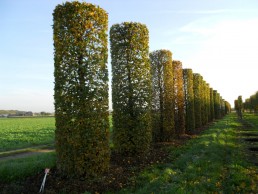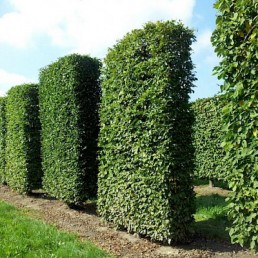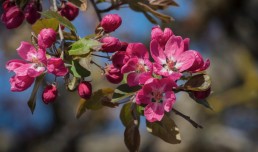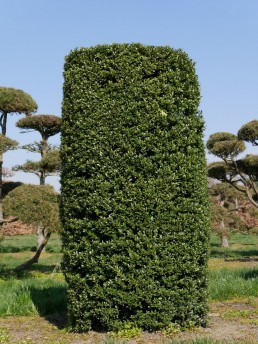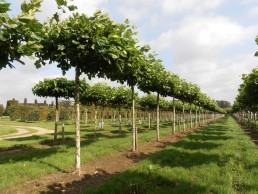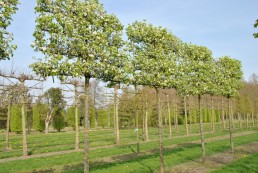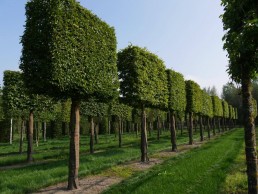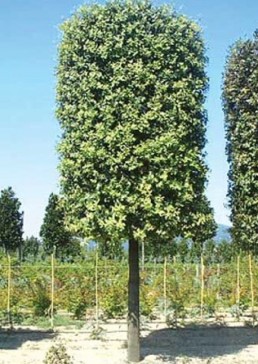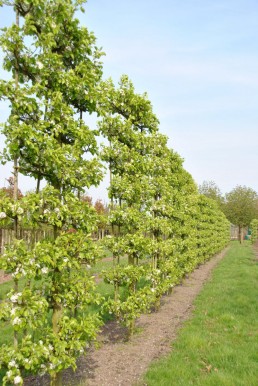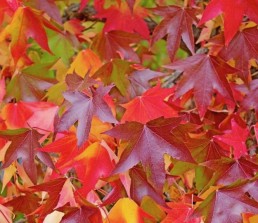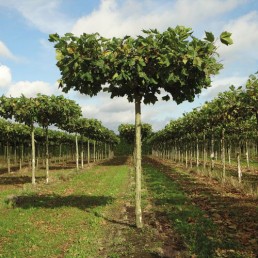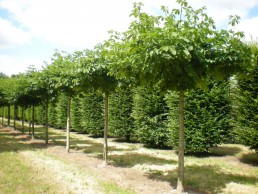“This crab apple is notable for its beautiful and profuse display of flower in the spring time. The flowers appear bright red in bud and then open to a brilliant white. Leaves emerge green in spring and remain so until autumn when they transform into orange and yellow. It is a great choice to bring colour in the spring as well as the autumn.”
Inquiry form
If you would like to arrange a personal inspection of this Specimen, please enter your details below and a member of our team will contact you shortly to arrange a suitable time and date.
Description
Originally, espaliers were trained to brick or stone walls because the masonry absorbed the sun’s heat and allowed for quick ripening of fruit. This practice evolved in climates not particularly suited to fruit production, such as the monasteries of Northern France. Although espaliers are created more for their ornamental value today, the tradition of tethering espaliers to masonry persists for good reason. Brick and stone backdrops require minimal maintenance.
There are many different espalier designs, each with a specific use in the garden. The more elaborate designs like the candelabra and the fan are best used as focal points in the garden, while the cordon and the Belgian fence are good for screening views.
Training apples and pears as espaliers is a space-saving way of growing fruit on a wall or fence. They require little pruning once established and are attractive in blossom and fruit and offer an architectural feature during winter.



